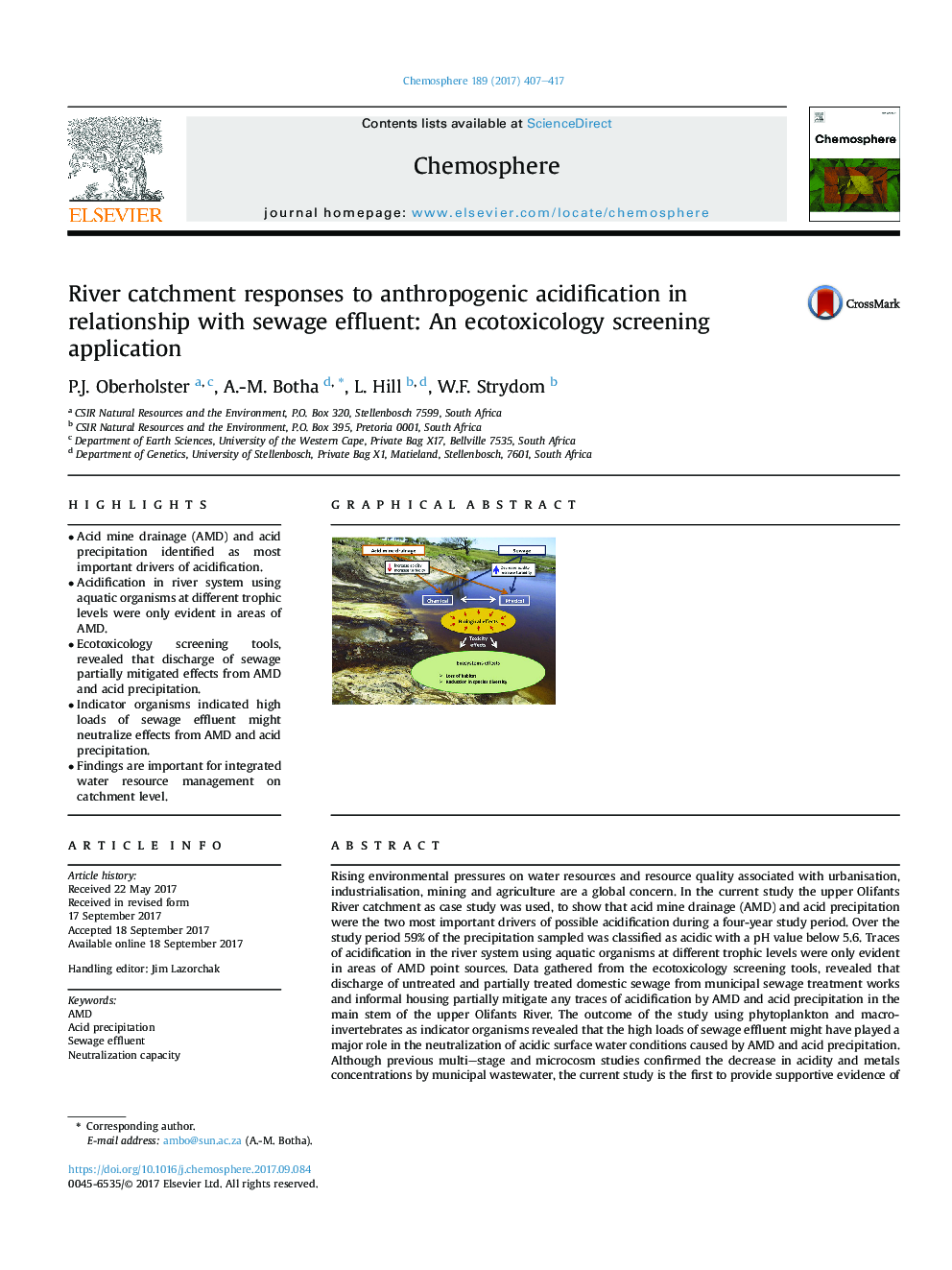| کد مقاله | کد نشریه | سال انتشار | مقاله انگلیسی | نسخه تمام متن |
|---|---|---|---|---|
| 5745885 | 1618782 | 2017 | 11 صفحه PDF | دانلود رایگان |
- Acid mine drainage (AMD) and acid precipitation identified as most important drivers of acidification.
- Acidification in river system using aquatic organisms at different trophic levels were only evident in areas of AMD.
- Ecotoxicology screening tools, revealed that discharge of sewage partially mitigated effects from AMD and acid precipitation.
- Indicator organisms indicated high loads of sewage effluent might neutralize effects from AMD and acid precipitation.
- Findings are important for integrated water resource management on catchment level.
Rising environmental pressures on water resources and resource quality associated with urbanisation, industrialisation, mining and agriculture are a global concern. In the current study the upper Olifants River catchment as case study was used, to show that acid mine drainage (AMD) and acid precipitation were the two most important drivers of possible acidification during a four-year study period. Over the study period 59% of the precipitation sampled was classified as acidic with a pH value below 5.6. Traces of acidification in the river system using aquatic organisms at different trophic levels were only evident in areas of AMD point sources. Data gathered from the ecotoxicology screening tools, revealed that discharge of untreated and partially treated domestic sewage from municipal sewage treatment works and informal housing partially mitigate any traces of acidification by AMD and acid precipitation in the main stem of the upper Olifants River. The outcome of the study using phytoplankton and macroinvertebrates as indicator organisms revealed that the high loads of sewage effluent might have played a major role in the neutralization of acidic surface water conditions caused by AMD and acid precipitation. Although previous multi-stage and microcosm studies confirmed the decrease in acidity and metals concentrations by municipal wastewater, the current study is the first to provide supportive evidence of this co-attenuation on catchment scale. These findings are important for integrated water resource management on catchment level, especially in river systems with a complex mixture of pollutants.
375
Journal: Chemosphere - Volume 189, December 2017, Pages 407-417
